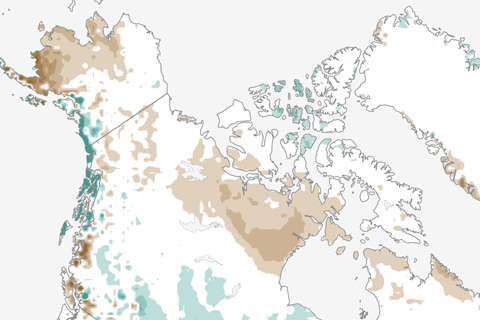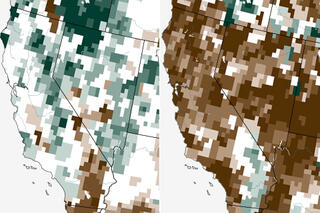
Ocean scientists have designed a new aquatic robot that can go where they suspect some of the heat energy from global warming is hiding: in the abyss.

Ocean scientists have designed a new aquatic robot that can go where they suspect some of the heat energy from global warming is hiding: in the abyss.

April snow extent was record low across Europe and Asia, and in June, the entire Northern Hemisphere was below average for the tenth year in a row. Spring snow is disappearing even more rapidly than Arctic sea ice in summer.

From Hawaii to the Florida Keys, the surprising intensity of coral heat stress in 2014 has scientists wondering what to expect in 2015, when El Niño is forecasted to finally develop.

Warmer winters or hotter summers: which will have greater influence on U.S. energy demands this century?

Recovered satellite images of Antarctica showed a larger sea ice extent than ever measured before—but the record was short lived. The record was broken in September 2014, only weeks after the discovery.

The spotlight may have been on California this past summer, but groundwater reservoirs—often the back-up for surface water supplies during prolonged drought—are in decline across much of the southern United States. Meanwhile, people are using millions of gallons of water per day in regions dependent on groundwater aquifers

In the Northeast, the amount of rain that came down in very heavy events increased by more than 70 percent between 1958 and 2010. A new law in New York requires state agencies to start thinking ahead about increases in extreme rain and other climate change risks.

On July 11, Lake Mead reached its lowest water level since construction of the Hoover Dam in the 1930s. Many scientists are concerned that the prolonged drought could be a sign that the region will face significant water supply challenges due to climate change.

August 27, 2014

Despite uncertainties around future precipitation change, it is clear that as temperatures rise in Colorado, the state is expected to face significant challenges to managing water resources, according to a new report.